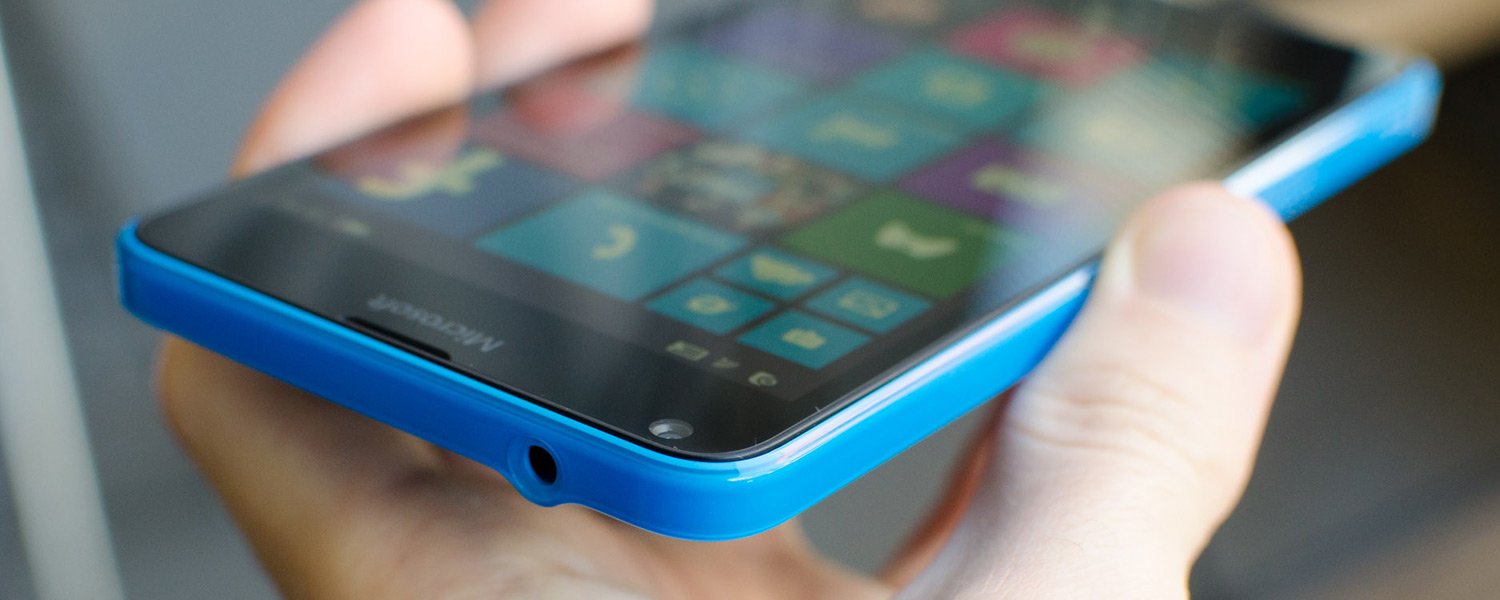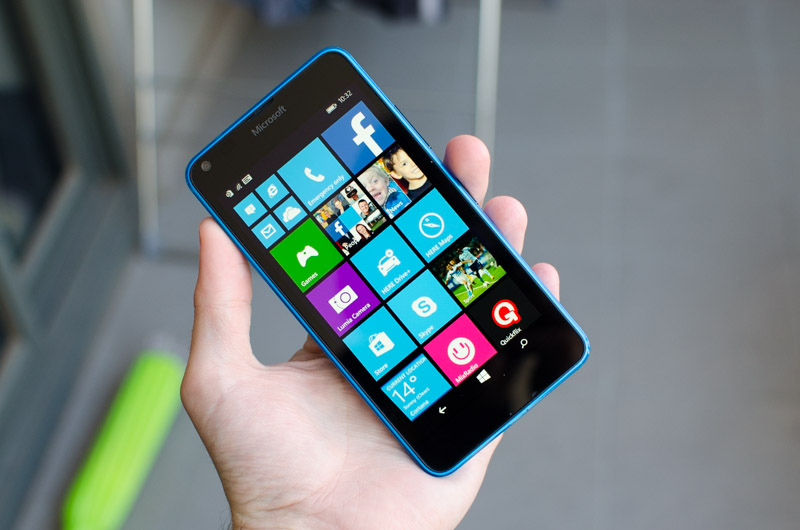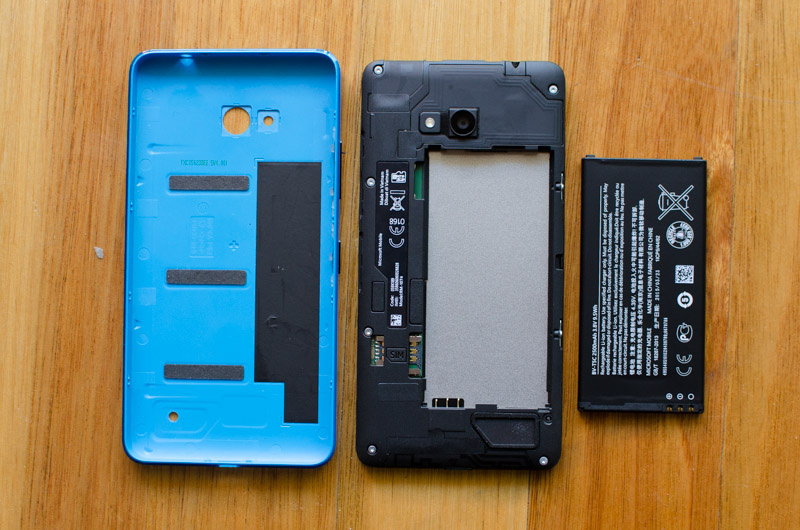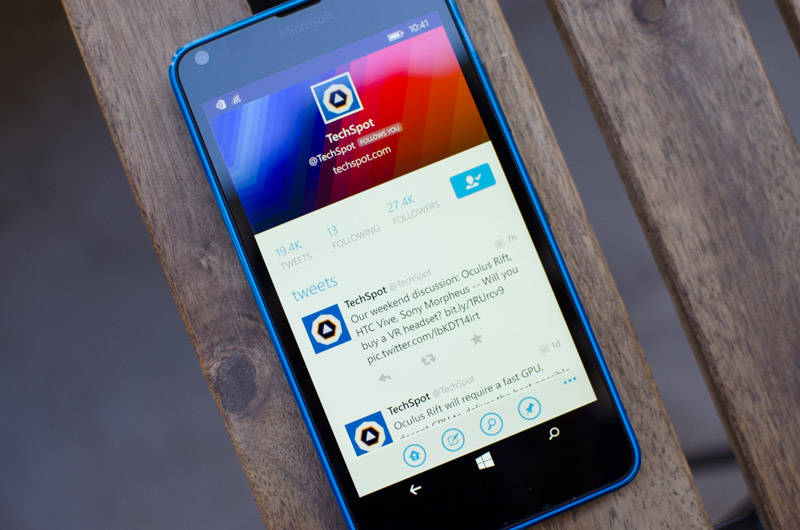Since Microsoft acquired Nokia's smartphone division, the company has focused its efforts on mid-range and entry-level handsets, where Windows Phone has been most popular. In less than two years, Microsoft's Lumia line has welcomed 11 smartphones priced under $300, without seeing a single flagship device.
The Lumia 640 we are reviewing today is one of those affordable devices. It's aimed at the upper segment of the entry-level market, priced at $200 - $250 unlocked (will vary depending on the market). It's got a decent hardware package for the price and runs Windows Phone 8.1 out of the box, with a promised upgrade to Windows 10 Mobile later this year.
The use of a Snapdragon 400 SoC is a little strange, considering Qualcomm's newer 410 silicon is already available. The familiar chip has been paired with 1 GB of RAM and 8 GB of expandable storage. On the front, the device packs a 5.0-inch 720p LCD display. Cameras are also fairly standard: eight megapixels on the back, and one megapixel on the front.
Microsoft has continued the long-running trend of colourful, plastic Lumia phones, and although it's not the nicest entry-level design I've seen, for the price it's hard to expect companies to produce awesome metal designs.
For a 5-inch device, the Lumia 640 is actually pretty large, with a significant bezel around all edges. Combined with a body that's 8.8mm thick with very little curvature or sculpting, the 640 can look and feel a little bit chubby. Luckily the device remains easy to hold and use, especially in comparison to the handset's larger brother, the 5.7-inch Lumia 640 XL.
Most of the Lumia 640's body is made from smooth, slippery and cheap plastic, which I'm not a fan of. The blue unit I received to review is vibrant and has that signature Lumia flare to it, but the use of this type of plastic doesn't make the Lumia 640 stand out from the pack. The good news is that the handset does feel thick and strong, which will help protect the 640 from any knocks, bumps or drops.
The Lumia 640's front panel is very plain, though the inclusion of Gorilla Glass 3 protecting the display is great to see. The back panel is also understated, including just a Microsoft logo, a small speaker, and the camera. This design is clearly about function over form, and for most intents and purposes, that is an acceptable approach to take for entry-level handsets. The Moto G is a great example of a handset that gets the job done despite an uninspiring design, and the Lumia 640 is similar in this regard.
The right hand side of the Lumia 640 is where you'll find all the buttons: the volume rocker to the top, and the power button in the middle. If I were nit-picking, the power button is slightly too low down for ergonomic operation, and all three buttons have a mushy feel to them, but this is hardly a significant concern. Meanwhile, a micro-USB port is found along the bottom edge, and the 3.5mm audio jack is along the top.
The thick rear plastic shell can be removed to reveal a swappable battery, a microSD card slot, and the SIM card slots. The device Microsoft sent me to review only has one SIM slot, though for most markets the Lumia 640 will be a dual-SIM device. As for the rear cover, it can be swapped out for other colors if you decide you don't actually want the blue variant after all.
The display included with the Lumia 640 is a 5.0-inch IPS LCD unit with a resolution of 1280 x 720, which is typical for an entry-level device at this price point. At 294 PPI, this mid-range panel is sharp enough to display crisp text and detailed images, although it doesn't come close to the sharpness exhibited by higher-end 1080p and 1440p displays.
The quality of the Lumia 640's display is good without being amazing. Color accuracy is acceptable across the board, although saturation is one or two levels behind what I'd like to see from an IPS-class LCD. The Moto G 2014's similar five inch display, for example, just has that extra notch of vibrancy that makes photos and videos look more beautiful.
One advantage the Lumia 640 display does have is in the brightness department. Thanks to a high maximum brightness level from the backlight, as well as Nokia's (now Microsoft's) ClearBlack technology and a special sunlight readability mode, the Lumia 640's display is reasonably easy to see outdoors in strong backlighting. Again, it's not the best display I've seen for outdoor viewability, but it's one of the better displays in this area.
The color temperature of the Lumia 640 display is somewhat tinted toward the yellow end of the spectrum by default, although you can correct this in the smartphone's display settings. You can also boost display's saturation levels using the color profile settings and while this does help address a lack of saturation by default, it can also reduce image detail in some circumstances. As for black levels, there's a small amount of backlight bleed from this display, though it's not distracting enough to be an issue.
Moreover, viewing angles were quite good from this IPS display, with only a mild shift in brightness occurring when viewing the display at acute angles. Glance screen is also supported, despite this not being an AMOLED display, although unfortunately the high sensitivity touch mode appears to have been removed, so the touchscreen no longer works with gloves on.








